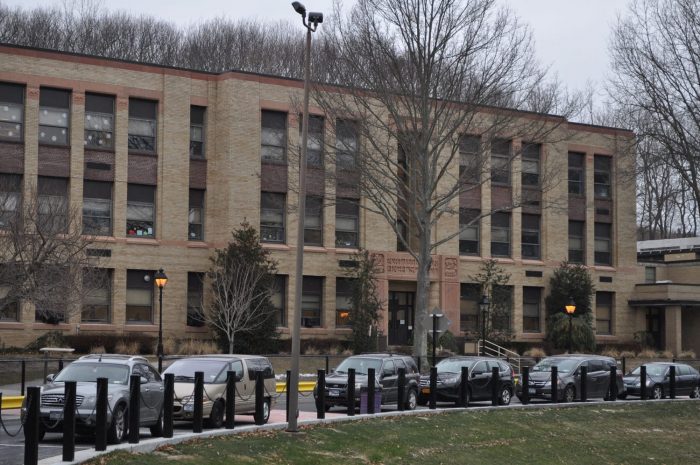Slow down multifamily development in Port Jeff Station/Terryville
Certain multifamily housing project proposals are progressing too fast in the hamlets of Port Jefferson Station and Terryville.
In Port Jefferson Station, starting at the intersection of Terryville Road and Main Street (aka Route 112), traveling north there are proposals to build four multifamily housing communities.
Proposal 1 will be built at the shopping center where the post office is located. Proposal 2 will be built at the old Malkmes Florists on Oakland Avenue. Proposal 3 will be built on Cherub Lane. And Proposal 4 will be built adjacent to the railroad tracks on both the east and west side of Main Street.
As a result of these proposed multifamily housing projects, our communities have requested an environmental impact statement and a comprehensive traffic study. Both requests have either been ignored or denied by the Town of Brookhaven.
This is not an anti-development letter. It is a shoutout to our Brookhaven elected officials to slow down the process of reviewing these proposed multifamily housing projects.
It is time to perform the necessary studies to help us better understand how these proposed projects will affect the air we breathe, the water we drink and the current and future traffic patterns in our communities.
We have a right to breathe clean air, drink clean water and feel safe in our communities without worrying about increasing traffic on our neighborhood streets. It is time to complete the necessary studies so that we can better understand how these multifamily housing projects will affect our quality of life.
Multifamily housing is not a cure all, and there are times when such projects cause detrimental quality-of-life issues that cannot be reversed.
Please slow down and complete the necessary studies.
Louis Antoniello
Terryville
Consider eminent domain for Maryhaven
In the United States, governmental bodies, at all levels from federal to a village, have an obligation to promote, and often provide, resources for the general welfare of their population.
In Port Jefferson vacant land is becoming a precious resource for uses that could provide and promote our general welfare. To that purpose, governments have the authority to gain ownership of land through the process of eminent domain.
Our village government held a public hearing on May 1 regarding a code change that would specifically allow a developer of the Maryhaven property to purchase the entire property, and construct as many as 192 condominium units. Special permission to do so is contingent on the builder’s willingness to maintain the outer walls of the existing historically important building known as the Maryhaven Center of Hope.
A building that was used for generations to help many in need — young children with severe disabilities, and later to house and aid those who required group living quarters, training for minimal paying jobs and other needs for their adult lives.
Without dishonoring the building that served those with the greatest needs for survival, it is difficult to understand how the proposed code change aimed specifically at “saving” the Maryhaven building is achieved by gutting the structure for the creation of expensive condominiums, a clubhouse and a swimming pool within, all to serve a private luxury gated community.
How does the proposed code change honor those that spent their professional lives providing for those with the greatest needs for their survival?
The future of this land is of particular importance at a time when the effects of climate change, ushering in periods of rain beyond current capacity to mitigate the potential of severe flooding, threatens our fire department and, possibly in years to come, the accessibility of our current Village Hall.
Now is the time to plan for a new Center of Hope with uses that promote and provide for the general welfare of those who follow us. The use of eminent domain to secure that property would honor the building and its grounds in service to the public, the fire department and village government operations.
Michael Mart
Port Jefferson
Local crime exposes bail reform dangers
In an effort to champion the successes of cashless bail, letter writer David Friedman cited a study done by the Data Collaborative for Justice [“Eliminating bail reduces recidivism,” TBR News Media, April 27]. Along the way he took the opportunity to make inaccurate personal assumptions about me, while criticizing respected Albany District Attorney David Soares [D]. In a clumsy effort to paint me as insincere, Friedman applies the term “crocodile tears.”
I’ve spent over three decades working with special needs and at-risk children ranging in age from preschool to high school. Responsibilities included teaching, meeting with parents and working with multidisciplinary teams that included probation officers, child protection specialists, social workers and psychologists. We had uplifting successes and heartbreaking disappointments. Tears, whether for joy or sorrow, were genuine.
Soares, shamefully silenced by his own party for condemning cashless bail, had a different take on much of the Collaborative Justice “data.” But an area where he could agree was the study’s very own “Summary and Conclusions.” Here were highlighted the dangers of “increased recidivism for people with substantial recent criminal histories.”
That terrifying scenario became reality in Suffolk County.
On April 24, Suffolk County District Attorney Raymond Tierney [R] announced the recent seizure of guns and narcotics: “Law enforcement was able to recover … approximately 268 grams of fentanyl, which could kill 134,000 people.’’
Tierney blamed bail reform laws: “Out of the 21 individuals arrested, we only got to seek bail on 11.” Consider that fact, knowing 350 of our neighbors died of fentanyl overdoses last year.
On May 11, Michael Lafauci, a six-year veteran assigned to the 6th Precinct’s Anti-Crime Unit, barely survived a gunshot wound. The alleged shooter was Janell Funderburke. Last August, he and three others were arrested after fleeing police, then crashing a 2018 BMW. Suffolk cops pulled them from that burning vehicle and, in the process, found a handgun and drugs.
Suffolk County Police Benevolent Association President Noel DiGerolamo linked Lafauci’s horrific wounding to what he considers New York’s failed bail reform law, saying this suspected gang member “should never been out on the street.” He continued, “An individual who one day is rescued by Suffolk County police officers … only … for him to attempt to kill one. This is what our leaders in Albany have created.”
Counting on those 10 enjoying a cashless bail release, as described by Tierney, after their drug bust to “reform”? Ask DiGerolamo, the two DAs and, most importantly, Officer LaFauci.
Jim Soviero
East Setauket
WRITE TO US … AND KEEP IT LOCAL
We welcome your letters, especially those responding to our local coverage, replying to other letter writers’ comments and speaking mainly to local themes. Letters should be no longer than 400 words and may be edited for length, libel, style, good taste and uncivil language. They will also be published on our website. We do not publish anonymous letters. Please include an address and phone number for confirmation.
Email letters to: [email protected]
or mail them to TBR News Media, P.O. Box 707, Setauket, NY 11733












































